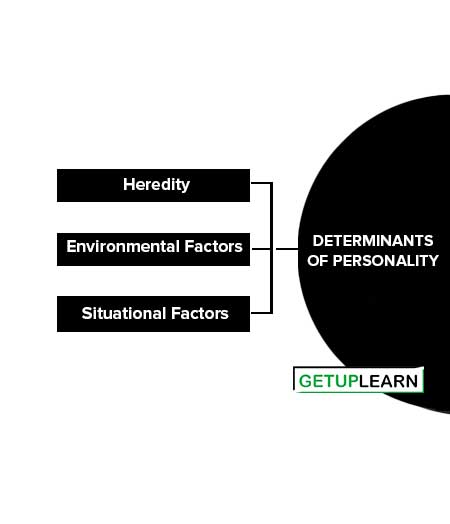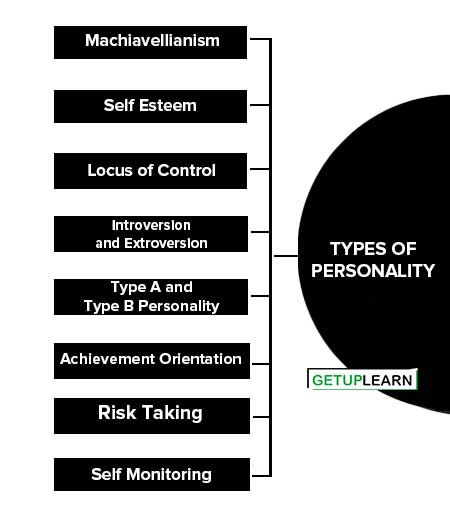Table of Contents
Determinants of Personality
Personality is determined by a number of variables. Many environmental, psychological, and situational factors work together to shape personality. There are certain aspects of a personality that are present in the person by birth. These include physical features, certain inherent talents, skills, etc.
There are other aspects of personality that are shaped by the environment to which an individual is exposed. The environment constitutes family, school, neighbor, etc. Also, despite being in the same environment, personalities may differ.
For example, siblings in the same family, though exposed to the same environment may have a completely different personality. We can say that another factor comes into play here, which is the situation. Let us now discuss all the factors in detail.

Heredity
Features passed on from one generation to the other through genes constitute heredity. Heredity is known to affect physical features like height, skin color, color of eyes, facial features, etc. Even intelligence is known to be determined by heredity factors.
Environmental Factors
The environment in which an individual is brought up and lives greatly affects personality. Family, friends, teachers, school, college, neighbors, and larger social circles, all constitute the environment. One gets first values from family. Parents teach their children about what is right and what is wrong.
The type of bonding between family members has a deep influence on the child. Later in life, many behaviors are learned and acquired in college. Our teachers, college rules and regulations, and friends all shape our personalities. Social learning plays an important role here. Thus socialization process.
Situational Factors
In recent years, the influence of situational factors on personality is increasingly recognized. Situational factors are the unique situations that one experiences in day-to-day life. These experiences are unique to a person, even though they may be born and brought up in the same environment.
For example, two siblings studying in the same school, and having the same family, may experience different situations. One may have a very strict teacher, who demands strict adherence to rules, while another may have a teacher, who has altogether a very lenient approach. Thus, both are put into different situations each day.
Types of Personality
The important personality aspects that determine what type of performance will be achieved or what kind of behavior is depicted at work are:
- Machiavellianism
- Self Esteem
- Locus of Control
- Introversion and Extroversion
- Type A and Type B Personality
- Achievement Orientation
- Risk Taking
- Self Monitoring

Machiavellianism
Niccolo Machiavelli (1469-1527) was a philosopher known for his theory of political control in The Prince, advocating the philosophy of ‘ends justify means.’ The term Machiavellian originates from his name and represents this belief. Machiavellianism (Mach) assesses an individual’s practical approach, emotional distance from others, and belief in justifying means for ends.
Research shows that high Mach scorers excel in manipulating others and achieving goals through persuasion. They perform exceptionally in face-to-face meetings and jobs requiring bargaining skills and substantial rewards. People can be classified as high mach or low mach based on these characteristics.
Low Machs are more easily persuaded, empathic, and interpersonally oriented, while high Machs are more resistant to persuasion, pragmatic, and logical. Culture also influences the level of Machiavellianism in individuals, impacting their success in jobs involving bargaining skills and significant rewards.
Self Esteem
Self-esteem refers to the feeling of self-respect. It shows the degree of self-confidence and belief that one has in his/her capabilities. It varies from person to person. People with high self–esteem believe that they have the ability to take up challenging jobs. They do not bother about others’ beliefs about themselves.
They move ahead with conviction and prefer to choose jobs that are unconventional in nature. On the other hand, people with low self-esteem are more vulnerable to external influences than those with high self-esteem. Self-esteem also has implications for behavior in organizations. People with high self-esteem perform better and have higher job satisfaction (Tharenou and Harker, 1984).
Locus of Control
Locus of Control is an individual’s belief, whether events are within one’s control (internal locus of control) or are determined by external factors that are beyond one’s control (external locus of control).
Research has proved that people having an internal locus of control (those who believe that events are determined by external factors) are more satisfied with their jobs, are more likely to assume managerial positions, and have a participative style of management (Judge and Bono, 2001). People with an external locus of control are likely to prefer a more structured job and have reluctance in getting involved in decision-making.
Introversion and Extroversion
Introversion and extroversion denote a person’s penchant for sociability and interpersonal orientation. Introverts have a world inside them and open up in front of others with difficulty.
They like to speak less. Both introverts and extroverts have different career orientations and require different organizational environments to maximize their performance. Extroverts are more likely to perform well in jobs that require a lot of interaction with others. In contrast, introverts are more likely to do well at jobs that require analytical skills.
Type A and Type B Personality
Type A and Type B personality individuals differ in their approach to doing work. Type A individual is always in a hurry, is extremely competitive, and often irritable. They feel that time is less and they have to perform a lot. They are highly goal oriented and count their success on material gains.
Type B personality is a person who is relaxed, and works at an easy pace. They also achieve their goals without getting unduly worried. They take time to enjoy life.
Achievement Orientation
People vary in their need for achievement, which can predict their behavior. Individuals with high achievement orientation continuously strive to improve performance, persistently overcome difficulties, and desire full credit for their success.
They prefer tasks of moderate difficulty, as tough tasks may lead to higher failure rates, and easy tasks lack the satisfaction of achievement. High achievers aim to attribute their success to their actions.
This trait impacts their performance in organizations, excelling in tasks of moderate difficulty with immediate feedback and a clear link between effort and reward. As a result, high achievers thrive in careers such as sales, sports, or management.
Risk Taking
People differ in their ability to tolerate uncertainties. Individuals who can work under situations of ambiguity and uncertainty are the ones having high risk-taking ability.
Such people can take up tasks where outcomes are not certain. On the other hand, low risk-taking individuals like to work under situations of certainties. They perform well when they have structured tasks.
Self Monitoring
Self-monitoring refers to the ability to adapt one’s behavior according to the situation. High self-monitors study others’ behavior very closely and take cues from there to change their behavior according to the demand of the situation.
Low self-monitors are the people whose reactions and behaviors in different situations remain the same. They are not as alert to cues in the environment.
FAQs Section
What are the types of personality?
These are the important types of personality:
1. Machiavellianism
2. Self Esteem
3. Locus of Control
4. Introversion and Extroversion
5. Type A and Type B Personality
6. Achievement Orientation
7. Risk Taking
8. Self Monitoring.
